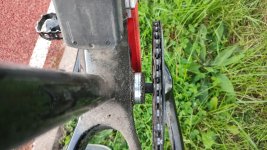VooteleAer
100 mW
 I managed to destroy my carbon frame-s bottom bracket, I had an aluminiun sleeve adapter glued into the frame and while stepping particularily hard onto pedal, that sleeve slided out (and cut the Sempu torque sensor cable). I'm into process of repairing it, so, what glue you would recommend to make it bulletproof?
I managed to destroy my carbon frame-s bottom bracket, I had an aluminiun sleeve adapter glued into the frame and while stepping particularily hard onto pedal, that sleeve slided out (and cut the Sempu torque sensor cable). I'm into process of repairing it, so, what glue you would recommend to make it bulletproof?




